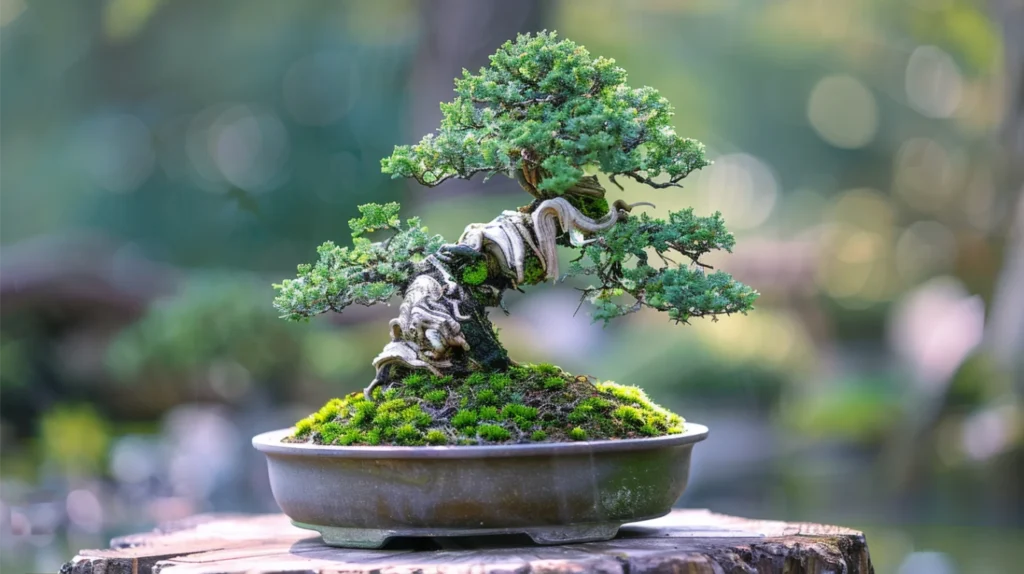The Art of Pruning Bonsai: A Guide to Shaping Your Plants

Bonsai, the ancient art of growing miniature trees in containers, is a beautiful and meditative hobby that has captivated people for centuries. One of the most crucial aspects of bonsai cultivation is pruning, which involves carefully shaping and training your plants to achieve the desired form and aesthetics. In this comprehensive guide, we’ll explore the art of pruning bonsai, providing you with valuable insights and techniques to help you create stunning, healthy, and well-shaped trees.
Understanding the Purpose of Pruning
Pruning is an essential practice in bonsai cultivation for several reasons:
- Shaping: Pruning allows you to control the growth and shape of your bonsai, guiding it towards the desired form and structure.
- Balance: Regular pruning helps maintain a balanced distribution of foliage and branches, ensuring that your tree looks harmonious and visually appealing.
- Health: Removing dead, damaged, or diseased branches promotes the overall health and vitality of your bonsai.
- Size control: By pruning, you can keep your bonsai at a manageable size, suitable for its container and the available space.
When to Prune Your Bonsai

The timing of pruning depends on the species of your bonsai and its growth cycle. Generally, the best time to prune most deciduous trees is during the dormant period in late winter or early spring, just before new growth begins. This allows the tree to recover quickly and encourages vigorous growth in the upcoming season.
For evergreen species, light pruning can be done throughout the growing season to maintain shape and control growth. However, major pruning should be performed in late spring or early summer, after the first flush of growth has hardened off.
It’s essential to research the specific requirements of your bonsai species to determine the optimal pruning schedule.
Basic Pruning Techniques
Before diving into the pruning process, familiarize yourself with the basic techniques:
- Pinching: This involves removing the growing tips of shoots with your fingers to encourage branching and maintain compact growth.
- Leaf pruning: Removing individual leaves can help reduce the size of oversized foliage and improve the overall appearance of your bonsai.
- Branch pruning: Cutting back branches to a specific point, such as a side branch or bud, helps control the shape and size of your tree.
- Root pruning: Trimming the roots during repotting helps maintain a compact root system and prevents the tree from outgrowing its container.
Tools for Pruning Bonsai

Having the right tools is crucial for precise and efficient pruning. Some essential tools include:
- Bonsai scissors: Small, sharp scissors designed for delicate pruning and shaping.
- Concave cutters: Specialized pruning shears with a concave blade that creates a clean, flush cut on branches.
- Knob cutters: Long-handled pruning shears used for removing thicker branches.
- Wire cutters: Used for removing training wire from your bonsai.
Make sure to keep your tools clean and sharp to ensure clean cuts and minimize damage to your tree.
Pruning for Different Bonsai Styles
Bonsai pruning techniques vary depending on the desired style and form of your tree. Some popular bonsai styles include:
- Formal upright: This style features a straight, tapering trunk with evenly spaced branches. Prune to maintain a triangular silhouette and remove any branches that disrupt the symmetry.
- Informal upright: Similar to the formal upright style, but with a slightly curved trunk and more natural branch placement. Prune to accentuate the curves and maintain a balanced form.
- Slanting: The trunk leans at an angle, with branches growing in the opposite direction to create a sense of balance. Prune to maintain the angle and remove branches that grow vertically or cross the trunk.
- Cascade: The trunk and branches flow downward, below the base of the container, creating a cascading effect. Prune to maintain the downward growth and remove any upward-growing branches.
- Semi-cascade: A variation of the cascade style, with the tip of the trunk extending just below the container’s edge. Prune to maintain the gentle downward flow and balance of the branches.
- Literati: Characterized by a tall, slender trunk with minimal branching and foliage, this style emphasizes simplicity and elegance. Prune to maintain the sparse, asymmetrical appearance and remove any unnecessary growth.
Study examples of each style and adapt your pruning techniques accordingly to achieve the desired form.
Pruning for Specific Species

Different bonsai species have unique growth habits and requirements, which influence pruning techniques. Here are some examples:
- Japanese maple: Prune in late winter or early spring to control size and shape. Remove crossing or crowded branches and thin out dense foliage to showcase the tree’s delicate structure.
- Juniper: Pinch new growth throughout the growing season to maintain compact foliage pads. Use scissors to remove brown or dead foliage, and prune longer shoots back to a side branch.
- Pine: Candle pruning is essential for managing the growth of pine bonsai. Remove the spring candles (new growth) in stages to control the size and shape of the tree. Selectively remove needles to expose the tree’s branching structure.
- Ficus: Prune ficus bonsai throughout the growing season to control size and encourage branching. Remove any long, straight shoots and cut back to a leaf or node to promote compact growth.
Research the specific pruning requirements for your bonsai species to ensure optimal growth and health.
Wiring and Pruning
Wiring is another essential technique in bonsai training, often used in conjunction with pruning to shape and direct branch growth. When pruning a wired tree, take extra care to avoid damaging the bark or cambium layer. Remove the wire periodically to prevent it from cutting into the growing branches, and always cut the wire rather than unwinding it to minimize damage.
Caring for Your Bonsai After Pruning
After pruning your bonsai, it’s essential to provide proper care to support its recovery and growth:
- Watering: Water your bonsai thoroughly after pruning, as the tree may experience some stress and require additional moisture to recover.
- Fertilizing: Wait a few weeks before fertilizing your bonsai after pruning to allow the tree to recover from the stress of cutting.
- Pest control: Regularly inspect your bonsai for signs of pests or disease, as pruning can sometimes create entry points for pathogens.
- Sunlight: Ensure your bonsai receives the appropriate amount of sunlight for its species, as pruning can affect the tree’s energy production and growth.
Conclusion
Pruning is a fundamental skill in the art of bonsai cultivation, allowing you to shape and refine your miniature trees into stunning living sculptures. By understanding the purpose, techniques, and timing of pruning, as well as the specific requirements of your bonsai species, you can create healthy, beautiful, and well-proportioned trees that showcase the essence of this ancient art form.
Remember, pruning is an ongoing process that requires patience, practice, and attention to detail. Observe your bonsai closely, make thoughtful cuts, and always prioritize the health and well-being of your tree. With dedication and experience, you’ll develop a keen eye for shaping and refining your bonsai, creating miniature masterpieces that bring joy and tranquility to your life.





